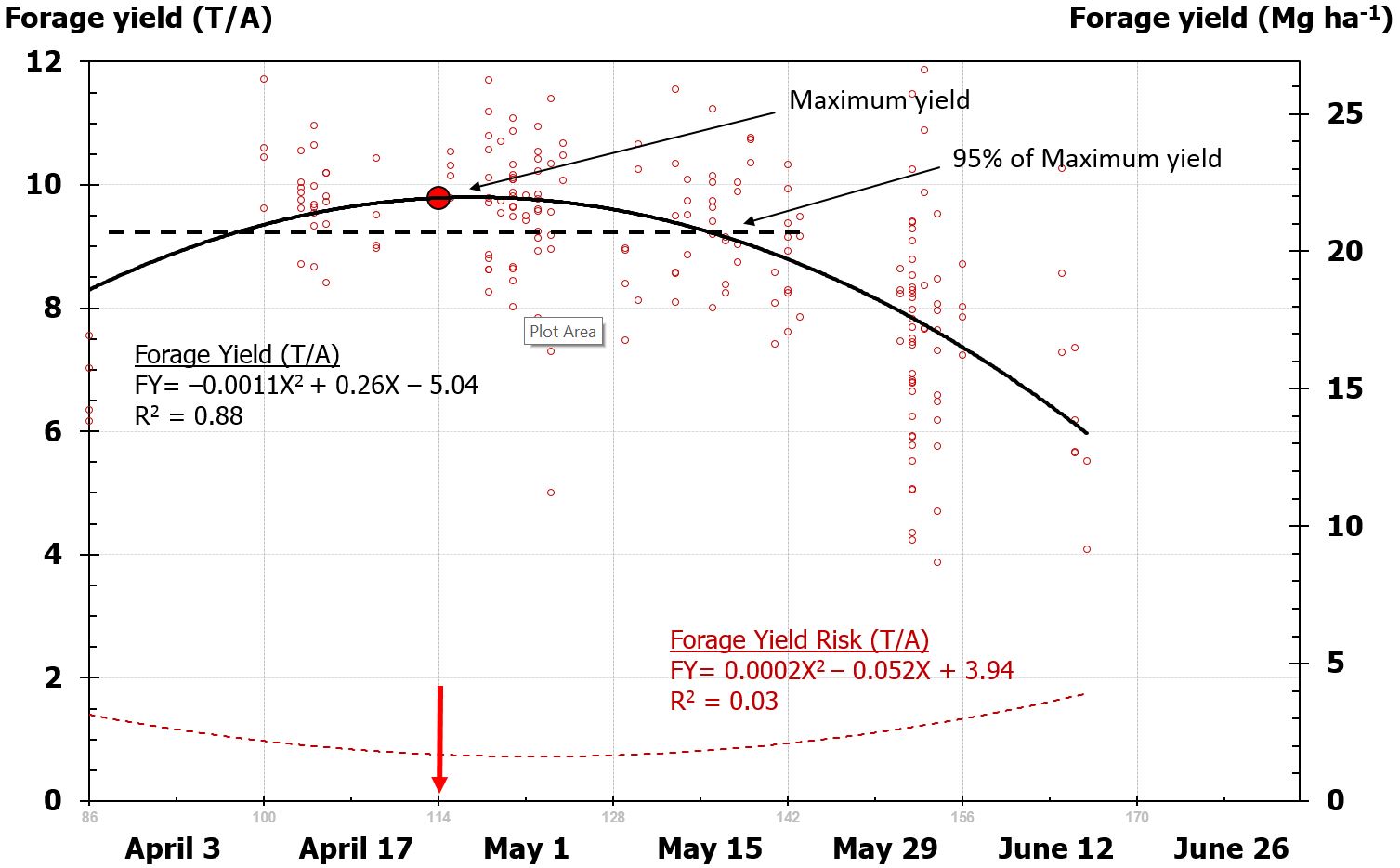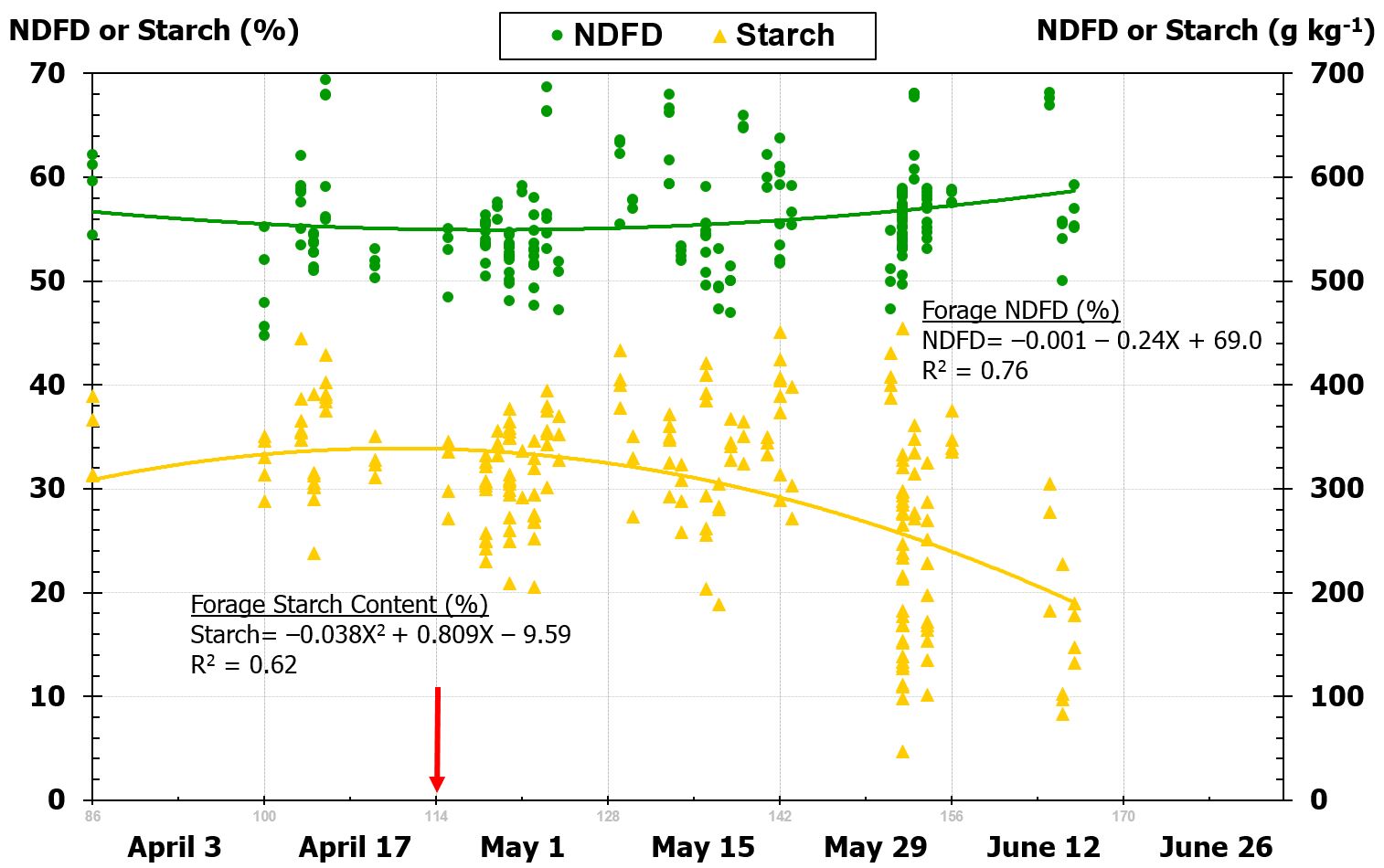
| May 2, 2013 |
Field Crops 28.521 - 116
|
|
|
Planting Date Effects on Corn Silage Yield and Quality
Joe Lauer, Corn Agronomist
We have written quite a bit about planting date effects on corn grain yield (high moisture and dry corn). What about its effects on corn silage? As planting date becomes more delayed, there is an increased likelihood that fields intended for grain will be harvested for silage, especially if the year remains cool.
The grain yield response of full-season hybrids to planting date at Arlington for the last 10 years has been described previously. These treatments were established using 8-row plots; four rows were harvested for silage and four rows were harvested later for grain. Figure 1 describes the planting date effect on corn silage yield. The date when maximum forage yield occurs is April 24 nearly 4 days earlier than the date of maximum grain yield on April 28 for these same plots. The relationship is more 'broad shouldered' than what is measured for grain; in other words the planting date window is longer than it is for grain with forage yields still within 95% of maximum yield on May 15.
Figure 1. Corn forage yield response of full-season hybrids (104-108 d RM) to planting date during 2003 to 2012 at Arlington, WI (N= 235 plots).

The size of the plant 'factory' is not affected by planting date. The number of leaves, the size of the stalk, shank and husk is largely genetically controlled. However, starch content is affected by planting date. Thus, the digestibility of the stover and grain pools is different (Figure 2). Digestibility of stover (ivNDFD) is close to a flat line across the range of planting dates tested (although linear and quadratic coefficients were significant). Starch content decreases with later planting dates.
Figure 2. Corn forage ivNDFD and Starch content response of full-season hybrids (104-108 d RM) to planting date during 2003 to 2012 at Arlington, WI (N= 235 plots).

When yield and quality is combined using the Milk2006 performance index, we find that Milk per Ton (quality) is not affected as much as Milk per Acre due to the forage yield impact (Figure 3). The optimum planting date for corn silage when measured using Milk per Acre is the same as it is for grain yield. The difference is that the planting date window is slightly longer for silage than it is for grain.
Figure 3. Corn forage Milk per Ton and Milk per Acre response of full-season hybrids (104-108 d RM) to planting date during 2003 to 2012 at Arlington, WI (N= 235 plots).
